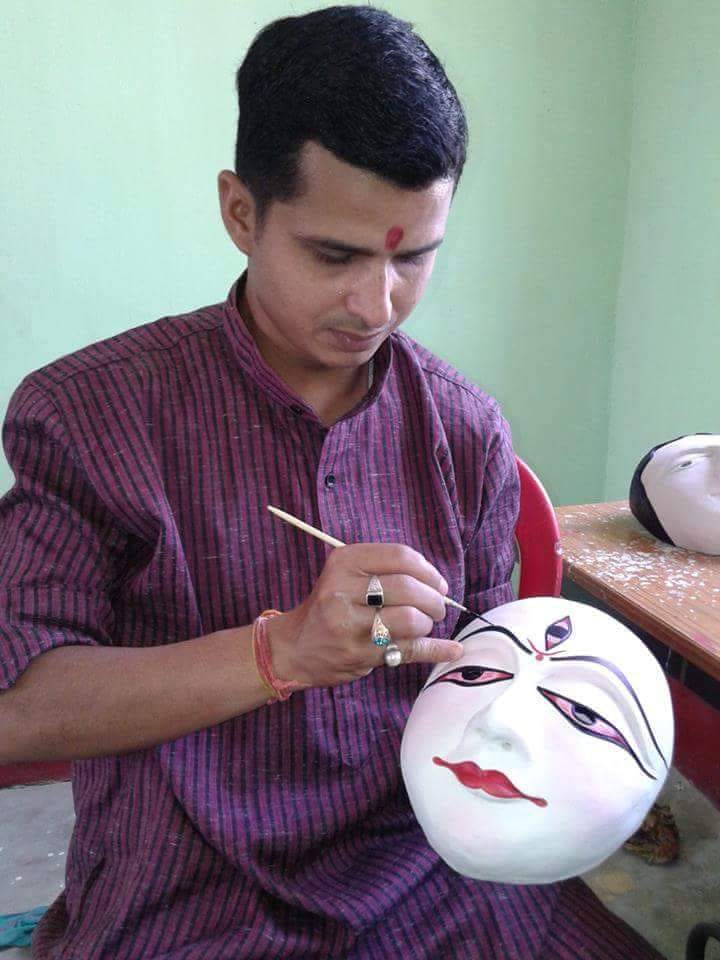Sumit Kumar Mahapatra, a Chhau-mask maker from Seraikella village in Bichnanchal part of Odisha, is the recipient of National Scholarship in Art in 2007. More than three generations in his family have engaged in making masks for various forms of the dance. On a brief interaction with Orissa Post, he threw light on Chhau dance and his own forte.
Elucidate the importance of Chhau at Seraikella.
The word ‘Chhau’ signifies a shadow. It has been derived from the King’s marshal arts. It’s a folk dance with a classical touch. Seraikella is a combination of 16 such art forms. Chhau dance was initiated in the household of King Kumar Bije Pratap Singh Deo. However, masks weren’t used until they were made by Silpakushal Late Prassana Kumar Mahapatra. The Silpakusal title was conferred on him by the king himself. The first Sadeikala dance was staged in Italy in the year 1935.
Are there any local variations of the Chhau dance form?
There are four principal variations of Chhau: Sareikella Chhau, Mayurbhanj Chhau, Purulia Chhau and Baripada Chhau. No masks are used in the variations of Baripada and Mayurbhanj. However, face of the artiste is smeared in various colours. Body movement is the key in these two variations. Masks are generally associated with Sareikella chhau. The masks are bigger and jumps are higher in Purulia chhau.
How many generations of your family have engaged in this art and what is its uniqueness? My family is engaged in this profession for the last three generations. My grandfather used to make Hamapatia Moda or Mukha by using bamboo sticks. However, the masks were considerably upgraded in the second generation with the usage of wet soil (both black and yellow soil from the Kharkai River).
Do you make masks differently to your ancestors?
Yes. Firstly, we create specific moulds. We use 8 layers of paper and 10 cotton clothes which are glued with Maida or white flour. We use ashes of burnt wood logs to enhance the moulds. This is followed by application of pure natural colours. The mask is dried after completion. Black soil is then used to polish the mask. Masks made by us are lighter and offers great comfort to the person who wears it.
How much time does it take to make a mask?
A mask takes around a week to dry up properly. The eyes and ear holes are made after the drying process is complete. The real skill in this task is creating various expressions in these masks.
Is there any particular reason for the gradual decline of this art?
It’s unfortunate that most Indians prefer western culture. They feel somewhat ashamed to be a part of such a rich cultural tradition. This has prompted our government to provide Guru-Shishya Parampara Scholarship to enhance the current state of Chhau-mask making.
Have you or your late father received any recognition for your work?
My father Guru Sushant Kumar Mahapatra has received the senior scholarship from Ministry of Culture, Senior Fellowship, State Sanskrutika Award (2005). I have received the National Scholarship in Art (2007) from the government.
Chaitali Shome, OP
